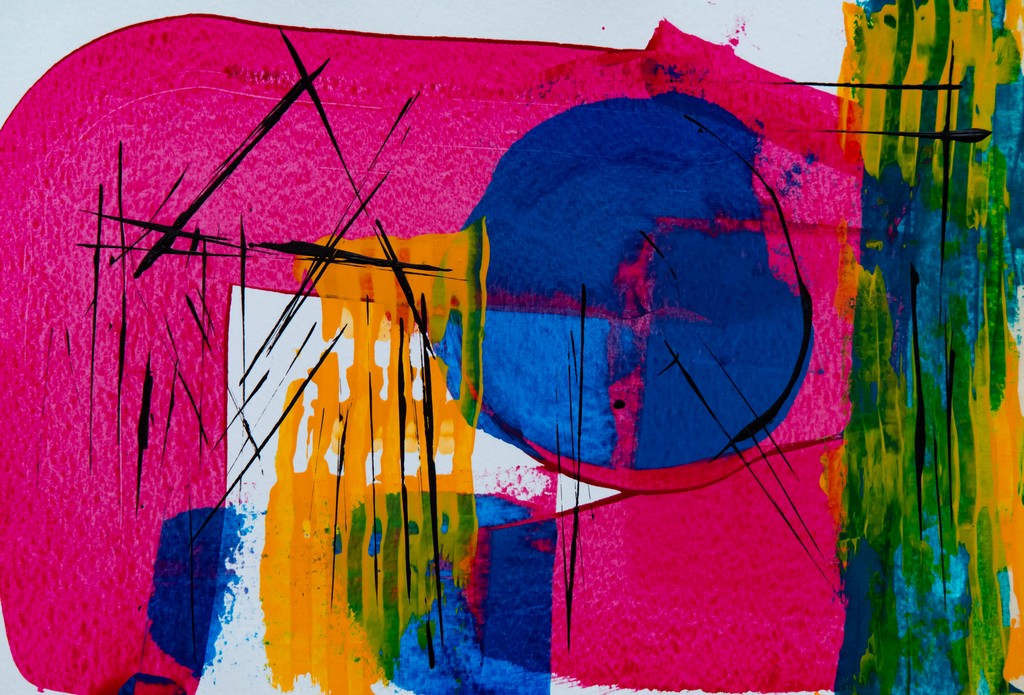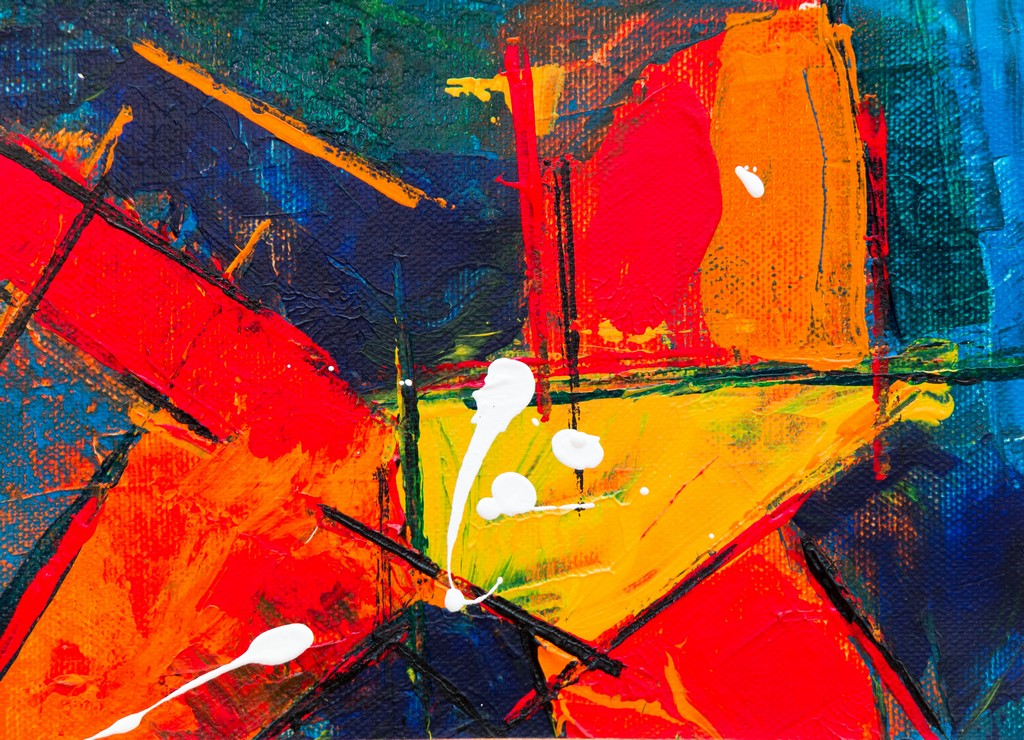UX Design Ideas Inspired by Mark Rothko and Abstract Expressionism
05/01/2024 2024-07-04 17:02UX Design Ideas Inspired by Mark Rothko and Abstract Expressionism
Every UX designer knows the struggle to find unique inspiration for their next design. Since UX design is as much of an artistic pursuit as it is analytical, it makes sense for great art to inspire great UX design ideas. Abstract expressionism is an art style that translates perfectly to UX design principles. Utilizing the process of design and the canvas to tell stories in completely abstract ways is the key attribute of abstract expressionism. These attributes can be adopted by UX designers to create interfaces that are sophisticated, engaging and tell a story.
One can’t talk about abstract expressionism and storytelling without thinking of one of its pioneers – Mark Rothko. This legendary modern art and expressionism pioneer used lighting, hues, and field-encompassing geometric shapes to create art that told stories, wowed, and wooed. Mark Rothko’s work has inspired thousands, and one of the latest applications of his art style has been to the world of UX design. Using his understanding of shapes, lighting and placement could help UX designers capture complex interfaces and functions in minimalistic design. So, if you’re looking for UX design ideas to wow your next client, this blog post is for you!
Beyond Painting a Picture: What is Abstract Expressionism?

Abstract Expressionism as an art style emerged in the US as a response to the Second World War. Artists such as Mark Rothko would gather in the Cedar Tavern in New York and discuss the political and cultural climate of the time, and through those emotional exchanges, an art style was born that rejected social convention. But what is the purpose of abstract expressionism, you ask? Abstract expressionism aimed to display complex emotions and ideas and illustrate stories using abstract forms, tools, colour fields and styles. These could focus on the process of painting itself using drips and splashes of colour (think Jackson Pollock) or the colour fields on canvas using solid geometric shapes, such as the Mark Rothko Yellow and Blue painting.
Characteristics of Abstract Expressionism
Abstract expressionism is as varied of a style as the minds and hearts of the artists who created it. However, there are some common abstract expressionism characteristics that have come to define the style:
- Immersiveness: Large canvasses were used, inviting the viewer to immerse themselves in the paintings and derive unique emotions and narratives. These canvasses could be as large as walls or entire rooms. There is typically no point of focus in these paintings, allowing the viewer to see the entire picture.
- Emphasis on Process over Result: A key focus of abstract expressionists was on the gestures and spontaneity in their process, not on creating a form or adhering to traditional art conventions. A lot of this work is thus characterised by drips, smears, strokes, and splashes of paint, creating dynamic and unpredictable pieces.
- Spontaneity and Unpredictability: The paintings were created without a form or notions in mind. Artists would often paint without sketching, rotate canvases in the middle of the painting, place canvasses on the floor, and use sticks, knives, brushes and more to paint.
- Colour: Abstract expressionist paintings were very attuned to colour as the medium to communicate emotions. Solid coloured fields, colour layering and the key emotion vehicles. Rothko was famous for using colours to create an ethereal effect in his paintings.
Personal Expression and Social Critique: Abstract Expressionism vs Pop Art
Where abstract expressionism emerged as a personal cathartic tool in response to World War II, pop art emerged as a tongue-in-cheek criticism of society and consumer culture. Abstract expressionism focuses on colourful, dynamic paint placement to inspire complex emotions, whereas pop art mimics the style of advertisements and comic books to present commentary on media and consumerism. Where abstract expressionism aims to draw you in, pop art aims to shock and provoke.
Cathartic vs Bizarre Imagery: Abstract Expressionism vs Surrealism
Surrealism is characterised by dreamlike and bizarre imagery as an exploration of darker and unconscious parts of the human psyche. While abstract expressionism also aims to explore human emotions, it is in a formless and abstract manner and is devoid of imagery. Where surrealism creates a sense of disorientation by juxtaposing unexpected elements together, abstract expressionism aims to create a sense of catharsis by creating dynamic and immersive visuals.
Mark Rothko: The UX Designer of a Bygone Era

Mark Rothko is a pioneer of the abstract expressionism movement as well as the artist behind many famous abstract expressionism paintings. His work marries intellectualism with emotions and ideas where he uses field painting, where he used layers of colour to create soft rectangles, giving viewers the impression that the rectangles are floating. His work also boasts drips, signs of human error, and colour-blocking through shapes, all intended to create an immersive narrative and capture emotions.
Mark Rothko’s work is so reminiscent of the sophistication and flow of UX design that it is obvious that had he been born in the 21st Century, he would’ve been a UX designer.
UX Design Applications of Abstract Expressionism
The colour fields, gradients, hues and contrasts used in abstract expressionism create both visual hierarchy and evoke emotions and ideas. These elements are also foundational to UX design, thus creating the opportunity for designers to utilize abstract expressionist styles in their designs. Here are some of the many ways abstract expressionism can inspire UX design ideas:
Gestural Interactions
Abstract expressionism is all about the playfulness of gestures and movement. This can easily be captured by UX designers to make swiping, sliding, clicking and other interface gestures more intuitive and engaging.
Minimalism and Abstraction
Abstract expressionism and minimalism go hand in hand. A lot of abstract expressionist art is comprised of minimalist elements arranged in abstract form to evoke emotions and immersion. UX designers can implement this technique to make their interfaces sophisticated while conveying the brand story in a unique way. The use of augmented reality for UX design can also benefit from the narratives created through abstraction in abstract expressionist paintings.
Dynamic Effects and Colour Blocking
Abstract expressionism’s dynamic approach to design and use of colour blocking to create narratives and flow is a perfect companion to UX design’s latest trends. With the advent of artificial intelligence, 3D rendering, animation and dark mode and dark patterns, UX design approaches are undergoing a paradigm shift. Abstract expressionist concepts such as dynamic effect translate effectively to using modern-day graphics to evoke liveliness and movement, whereas colour blocking is key to user psychology and creating flow.
Conclusion
Abstract expressionism and UX design ideas seem like an unlikely duo, but share a key commitment to experimentation, emotion, sophistication and creativity. By exploring the techniques and attributes of abstract expressionism, UX designers can generate interfaces that are seamless, memorable, bold and engaging. Whether you’re inspired by Mark Rothko’s Yellow and Blue painting or Jackson Pollock, you can marry modernity and aesthetics in your designs without fail.
If you want to learn how to augment seamless and engaging UX Design, check out JD School of Design’s reputed Master’s Program in User Experience and Interaction Design! If you are big on innovation, sustainability and ethicality, this course will be a breath of fresh air for you. Check out the JD School of Design and propel your career forward today!













